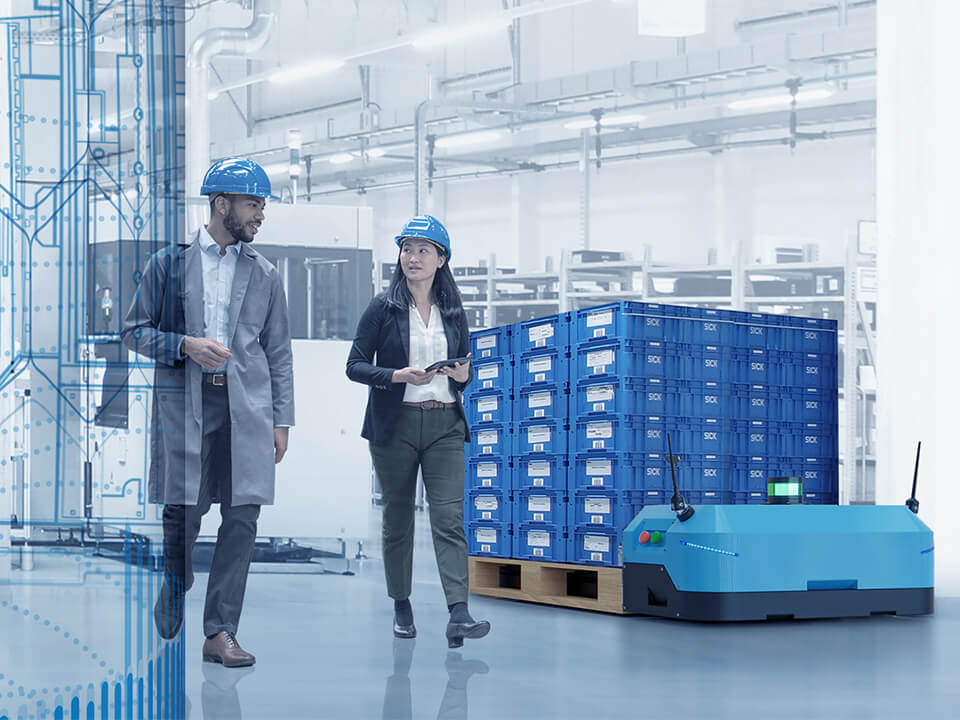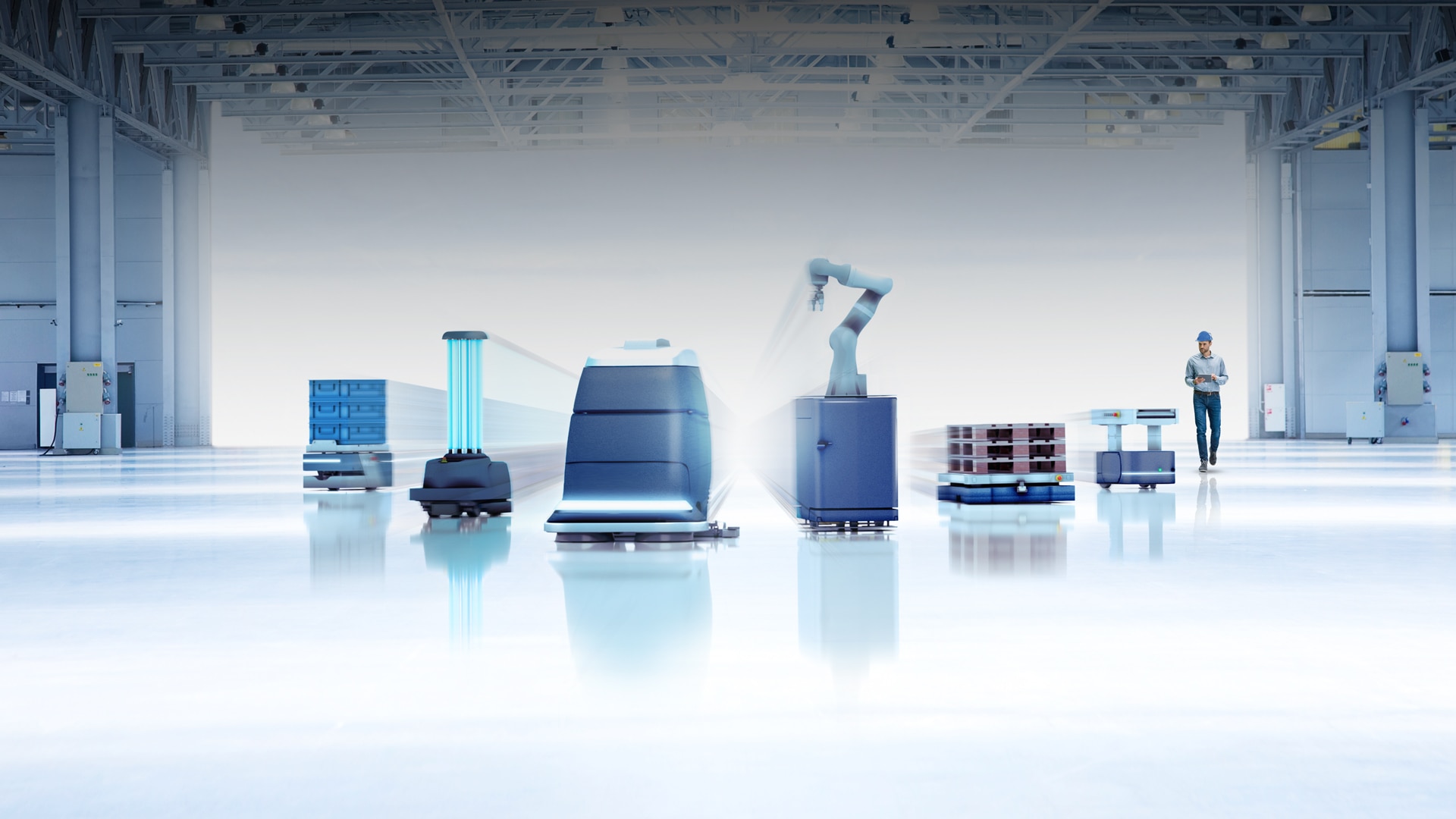As an established sensor and solution provider, SICK is proud to be shaping the future of mobile robots together with its customers: Tasks such as safe and precise localization, navigation, efficient handling of loads, and fleet intelligence are realized by SICK with modular solutions, smart software, and powerful sensors.

More efficiency through flexible and dynamic processes
Welcome to a world in which mobility is bringing about profound changes. When correctly equipped, automated guided vehicles (AGV), autonomous mobile robots (AMR) and industrial mobile robots (IMR) ensure flexible, dynamic processes – for greater efficiency in industrial and public environments.
WHAT IS YOUR AREA OF APPLICATION FOR MOBILE ROBOTS?
The uses for autonomous robots seem limitless. At the same time, expectations on the adaptability of these solutions are also increasing. The applications and tasks of mobile robots are becoming increasingly complex and the execution must be very precise. The interaction with people and the multifaceted environments place high demands on safety. With sensor technologies, software solutions and comprehensive advice, SICK equips mobile robots for a variety of applications and industries – all from a single source.
SICK’s modern sensor technologies and software solutions for navigation, localization and positioning enable the precise and safe movement of mobile robots in dynamic environments. In particular in the vicinity of people, it is essential that autonomous robots reliably recognize their surroundings and people. Rugged sensor technologies and intelligent software for safety and environment perception prevent collisions with obstacles or people and at the same time achieve a high productivity. SICK also supports mobile robots with transporting loads, with achieving efficient load handling, and with fleet intelligence.
THE VIRTUAL WORLD OF AMR

SICK – Your experienced partner for mobile robot solutions
SICK supports you in optimizing your mobile robots and finding the right solution for your individual challenges. A broad portfolio of sensor solutions, digital products and services is available to you for this purpose. In addition, SICK will develop with you, in a co-creation process, customized, scalable solutions for your specific application. SICK’s proven experts in the field of mobile robots will support you with their expertise. They have many years of practical experience and are familiar with the challenges of mobile robot applications in a variety of industries.
Expert SICK employees analyze your process, advise you on feasibility, determine the appropriate technology, and develop turnkey product solutions. They support your company during integration and commissioning and offer you comprehensive life cycle management, including hosting, worldwide. For you, this means fewer interfaces, shorter project times, and less risk. You can concentrate on your core competencies – SICK will take care of the rest.
